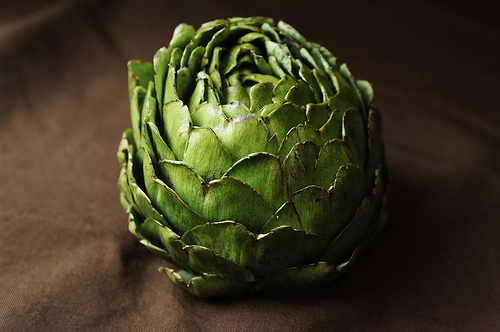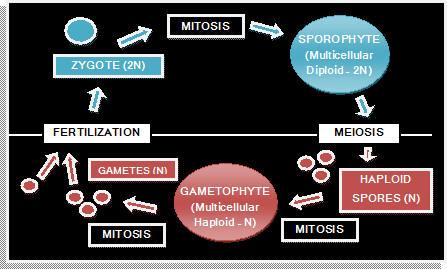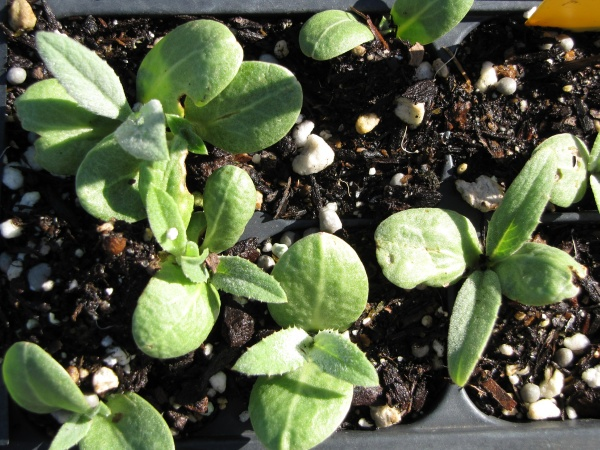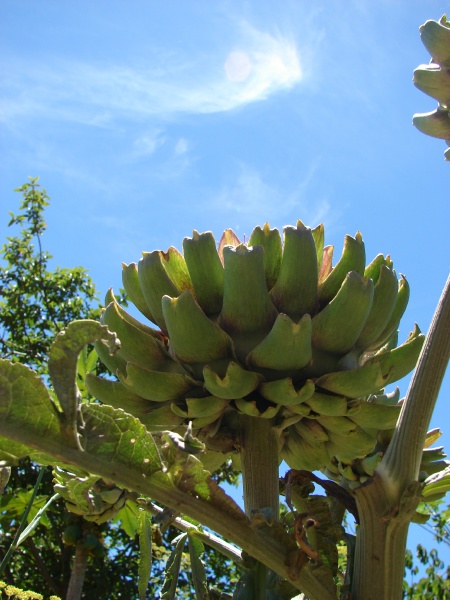Reproduction and Adaptation
How has the Globe Artichoke continued to survive and reproduce on our planet?
An individual artichoke plant will grow indefinitely, but is usually replaced every 4 - 7 years. Vertically, it can grow up to 3 or 4 feet and can measure 6 feet wide. It is able to grow year by year by sprouting shoots near the surface of the ground. At the place where each shoot lands, a rosette is formed and a new stalk will grow.
If you think the artichoke plant is large, think again! Compare it to this plant:
Silver Maple (Acer saccharinum)
The Globe Artichoke like most other plants grows and reproduces via a process commonly known as the alternation of generations. (This process is depicted in the diagram to the left.) In most angiosperms (flowering plants), the sporophyte is the actual plant you would see. Meiosis in the sporophyte occurs only in certain locations, most commonly the flowers. The stamen contains the microsporangium (gametophyte), or the "male" component for reproduction. Also found in the flower, is the pistil, which contains the ovary, or the "female" component. Cynara scolymus is considered to monecious as both the female and male components are on one plant. These components are considered to be the gametes as they are haploid.
The pollen of one anther must be transferred to the stigma of another flower in order for pollination to take place. For the Globe Artichoke, pollination is brought on by insects or other vectors of movement. This includes agitation of the flower which would result in movement of pollen. Clearly, the artichoke is not picky about the help it requires. Although C. scolymus is self-compatible, it is not able to reproduce viably via self-fertilization. When the pollen lands on the stigma, it divides and two sperm cells travel down the style into the ovary. There one of the sperm will fertilize the egg forming a zygote and the other fuses with a polar nuclei forming the endosperm nucleus. The ovule that contains the ovary develops into the seed. When the seed is released, the hope is that it will land in suitable conditions, germinate, and grow into a sporophyte that will begin the process all over.
Compared to aquatic plants, the Globe Artichoke has acquired some adaptations that allow it to thrive on land. The first of which being stoma. Stoma are openings on the bottom side of the leaf that allow for the exchange of gases such as oxygen and carbon dioxide. These stomata are vital to the plants survival as they aid in reduction of water loss which is crucial. Another important innovation for land plants, is the addition of the cuticle. This waxy layer that lines the outside of the plant is another key component in the prevention of desiccation. The differentiation of above and below ground plant structures such as roots and leaves, provide the plant with more structure. Roots also allow the plant to better access to nutrients and water. Each structure in the plant plays a special role in daily living. Each leaf is designed to maximize surface area for absorption of sunlight. In the photo to the right, it is clear that even as a young sporophyte the leaves are designed to avoid overlapping.
Although plants cannot move in the typical sense, they are able to do so in their own special way. Compared to animals, plants accomplish the same tasks in what seems like slow motion. The most common form of movement is called positive phototropism. This describes the plant's ability to lean towards the direction of the sun. In truth, auxin, a hormone, is controlling the speed of growth on both sides of the stem. On the shaded side, the auxin is triggering faster growth, creating the "lean". Another response to sunlight is called photomorphogenesis. This describes the ability of a plant to create different forms depending on the amount and availability of light. Gravotropism is the ability of a plant to respond to gravity and recognize which direction to send their shoots and roots. Thigmomorphogenesis describes the change in growth of a plant in response to "touch". For example, a plant grown in a very windy environment would not grow to the same height as that of the same plant in an environment protected by such harsh conditions. Every plant has a different balance and ratio of hormones that controls these responses. The Globe Artichoke is no exception to these conditions and in this way is able to react to environmental stimuli.
Daily life for the artichoke includes a variety of INTERACTIONS with other organisms.
Back to HOME
Questions? Comments? Don't hesitate to contact me at
fenske.rach@uwlax.edu!
Site Designed by Rachel Fenske - Last Updated 4.15.11
University of Wisconsin - La Crosse



